If you are looking to grow a stand-out perennial flower with eye-dropping beauty and the ability to draw in a wide range of pollinators – then look no further than the amazing torch lily.
Also known as red hot pokers, torch lily is a herbaceous perennial that features tall flowering spikes for blooms that look as though they are ablaze in colors of red, orange, and yellow. And does this hardy perennial ever have some incredible qualities!
Once established, torch lily is one of the best drought-tolerant plants around. It grows via rhizomes, so it can store excess water to use in cases of extreme drought, surviving even the toughest, dry summers Mother Nature can throw at it.
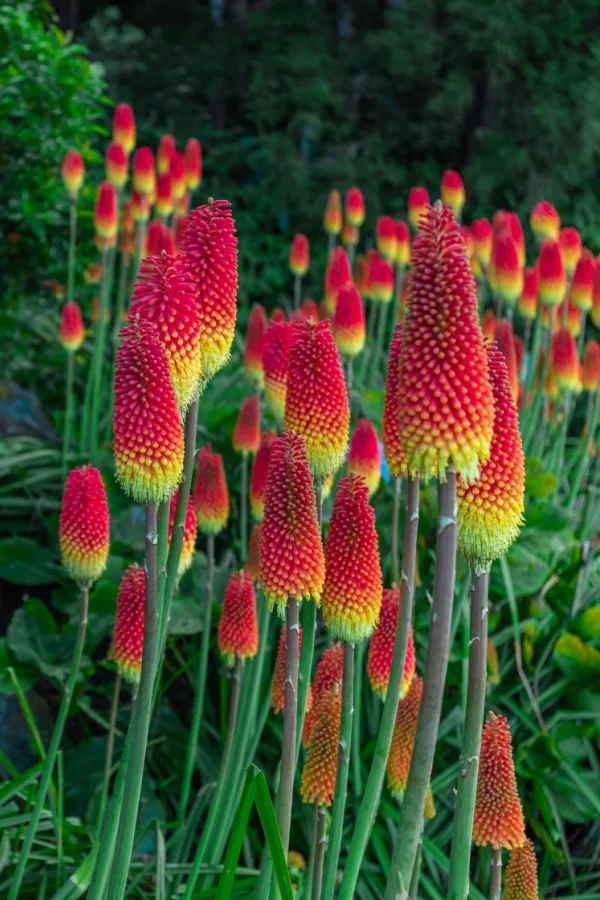
In addition to handling the heat, torch lily is also excellent for drawing in pollinators. Bees, birds, and butterflies all flock to their vibrant, fiery blooms. But perhaps even better, torch lilies are also highly deer and rabbit resistant – making them an excellent choice for flowerbeds that struggle to survive animal visits.
Varieties of Torch Lily – The Amazing Beauty Of The Torch Lily
Contrary to its name, torch lilies are not actually in the lily family. Instead, they are related to plants within the poker family, which all bloom with long extended colors above their plant base. And with over 70 varieties of torch lily to pick from, there are plenty of amazing of amazing choices to grow.
Some varieties grow up to 6 feet tall, while dwarf varieties can grow as little as 8 inches in height. Most varieties send up their blooms in the spring and summer months, adding a more than exotic feel to flowerbeds and gardens as they flower.
Torch lilies are also highly versatile. They make excellent border plants. You can also grow them behind mounding or trailing perennials to add additional color and interest.
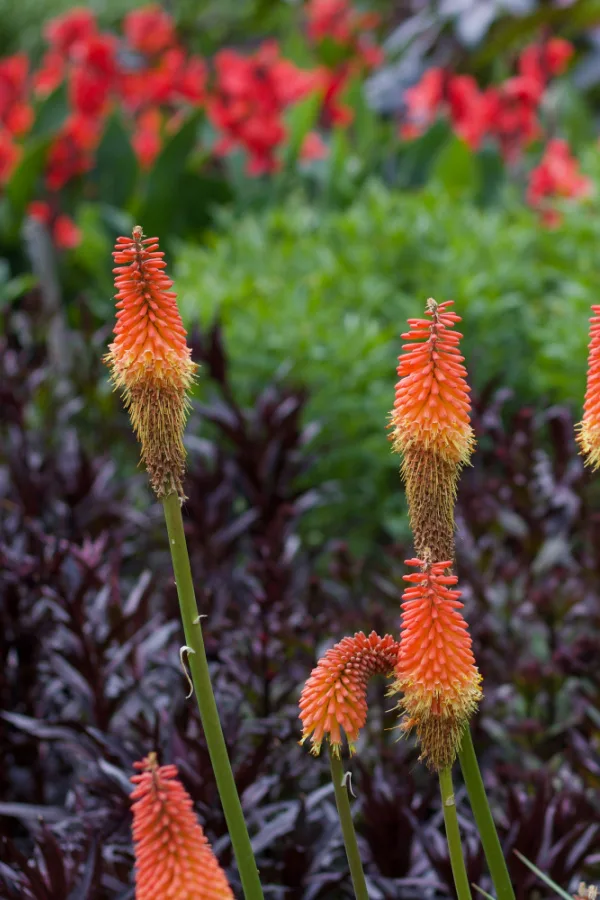
How To Plant, Grow & Maintain Torch Lily
Planting Torch Lily
Torch lily is hardy in growing zones 5 through nine. You can actually grow torch lilies from either seed, transplant, or by dividing the rhizomes of an existing plant. Growing from seed will take a lot more patience as it can take a considerable length of time to develop sizeable plants.
Starting Seeds Indoors
If planting from seed, it is best to start seeds indoors about 8 to 10 weeks before your last frost date. Keep the soil evenly moist and containers in a location that is around 70 to 75º Fahrenheit (F). From seed, torch lily can take as long as 30 days to germinate.
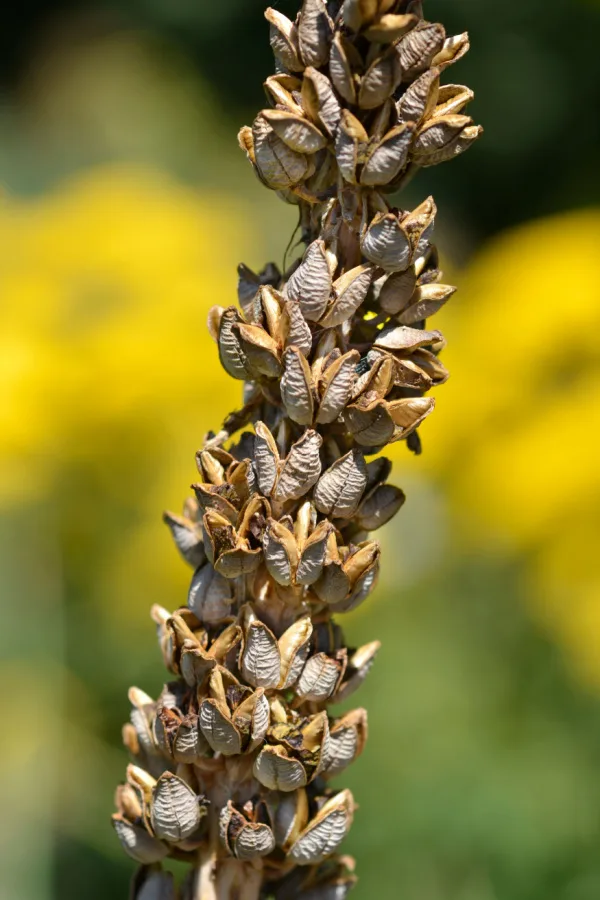
You can also plant torch lily seeds directly in the soil as long as the outside temperatures remain around 70º F. By waiting until the soil warms, your plants may not bloom the first year, but will be ready to flower by the second growing season.
Planting Divisions or Tuberous Roots – The Amazing Beauty Of The Torch Lily
Because of the long seed to flower time, many opt to plant torch lilt from divisions or by purchasing transplants. Product Affiliate Link : Bare Root Torch Lily Plants
If you are dividing an existing torch lily plant, dig up the plant in early spring as soon as the ground is workable. Carefully loosen the soil away from the clumps. Separate or cut the clumps in half and immediately plant them in the soil.
When creating plants via division, always take new starts from the perimeter of an existing plant. Torch lilies promote new growth on their perimeter. As a plant ages, the center dies out, so taking from the outside ensure good growth potential. See: How To Divide Perennials In The Spring – Fill Your Flowerbeds With Plants!
Growing Location – How To Grow Torch Lilies
Choose a location that receives full sun for the best blooming results. Some afternoon shade can help to protect the plants in very warm weather, but ensure that they receive plenty of morning and early afternoon sun for better blooming potential.
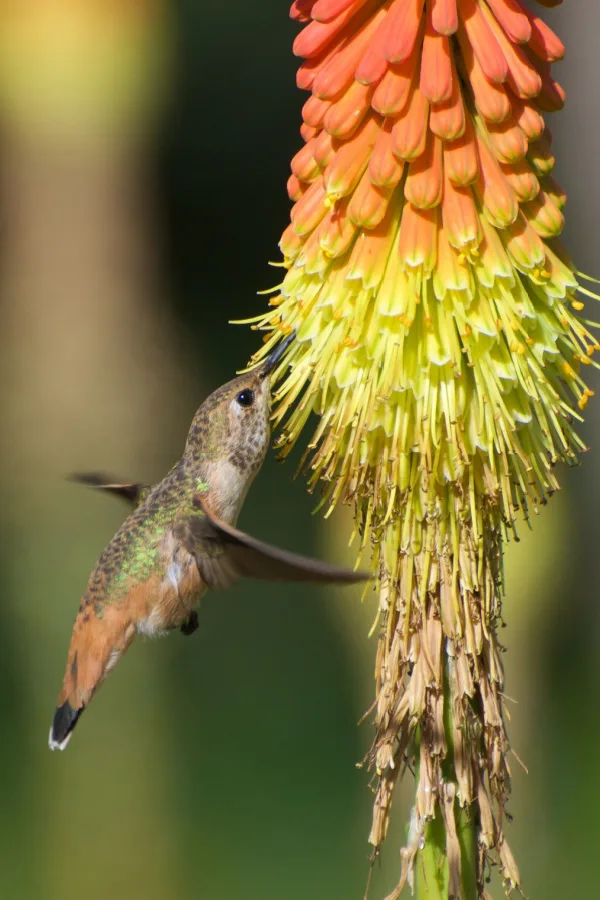
As long as the soil drains well, torch lilies aren’t too particular about the soil pH. You can amend poor soils by adding compost and mixing well to help improve nutrient levels and organic matter.
Do not place crowns more than 3 inches deep in the soil. Keeping the crowns right at the soil level is actually better. Planting them deeper will cause issues with plant growth. Backfill with soil and water plants well.
Long-Term Care – How To Grow and Maintain Torch Lily
Watering – The Amazing Beauty Of The Torch Lily
One of the best qualities of torch lilies are they are highly drought resistant. When first planting, you may need to water every few days to help get the perennials established. After that, they rarely if ever need watering.
Mulching
The rhizomes of torch lily benefit greatly from mulch, both in the winter and summer months. In the summer, mulch will help to keep out competing weeds and hold in moisture for the plant. During the cool winter months, the mulch can help protect their shallow rhizomes from freezing out.

In cooler growing zones, do not prune back the foliage of the plant in the fall. Instead, allow it to remain to help insulate the plant’s rhizomes from the winter chill. Use a nice thick layer of shredded leaves, straw, pine needles, or grass clippings to help the plant through winter. Ensure that the crowns are completely covered and stay that way all winter long.
Fertilizing
If the growing location has rich, fertile soil, you do not need to add any additional fertilizer for torch lilies to succeed. For locations with poor soil, use a light dose of all-purpose fertilizers or compost tea on the plants right before blooming begins to help power stronger flowering.
Deadheading & Pruning – The Amazing Beauty Of The Torch Lily
As torch lilies bloom, they flower beginning on bottom of the flower stalk and work their way up. As this happens, the blooms on the bottom will start to dry up and fade first.
Deadheading the spent flower stalk will help to encourage additional growth of the other flowers. The longer old blooms remain, the more energy they can take from the plant. Simply take a pair of sharp pruning shears and snip off at the base of the stalk to deadhead.
In addition, prune plants in early spring to remove any dead growth from the previous year. This will give plants plenty of space to push out new growth.
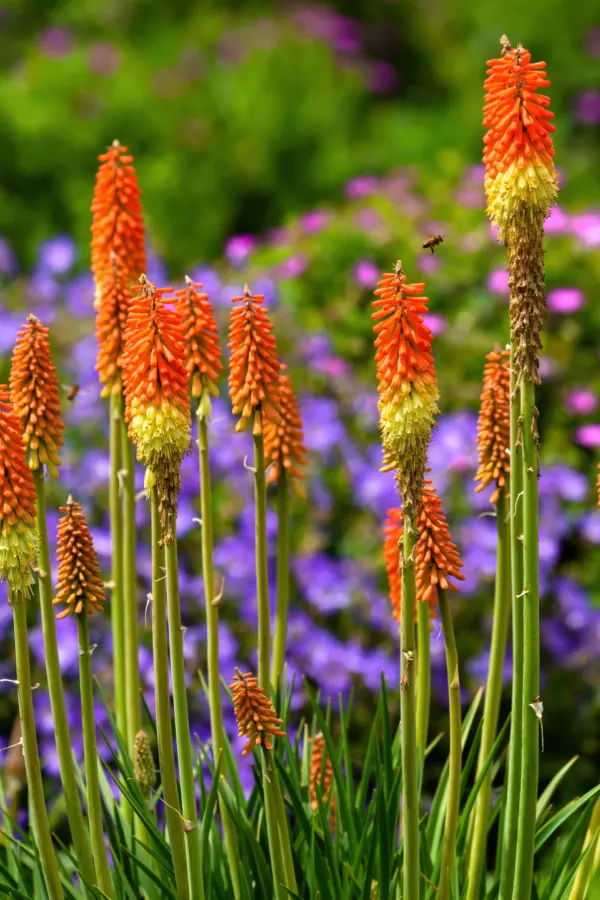
Avoid overwatering torch lilies since they are susceptible to root rot. With most drought-tolerant plants, overwatering is more of an issue than underwatering. Because they do grow and spread so easily, the torch lily is considered an invasive species in some locations – especially in warmer climates such as California and Oregon.
Here is to enjoying the beauty and unique look of growing torch lilies in your flowerbeds and garden this year and for many years to come!

Follow Our Facebook Page For Even More Great Tips! Simple Garden Life Facebook Page
Simple Garden Life is a website dedicated to keeping gardening fun, simple and enjoyable! We publish two new articles each week along with a new garden podcast episode every two weeks. This article may contain affiliate links.
